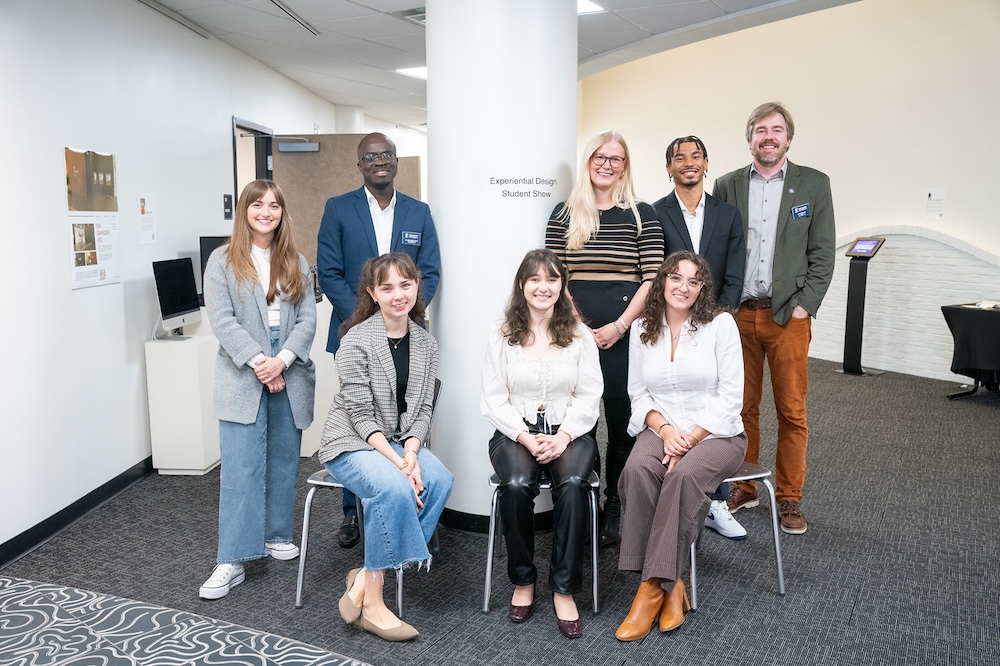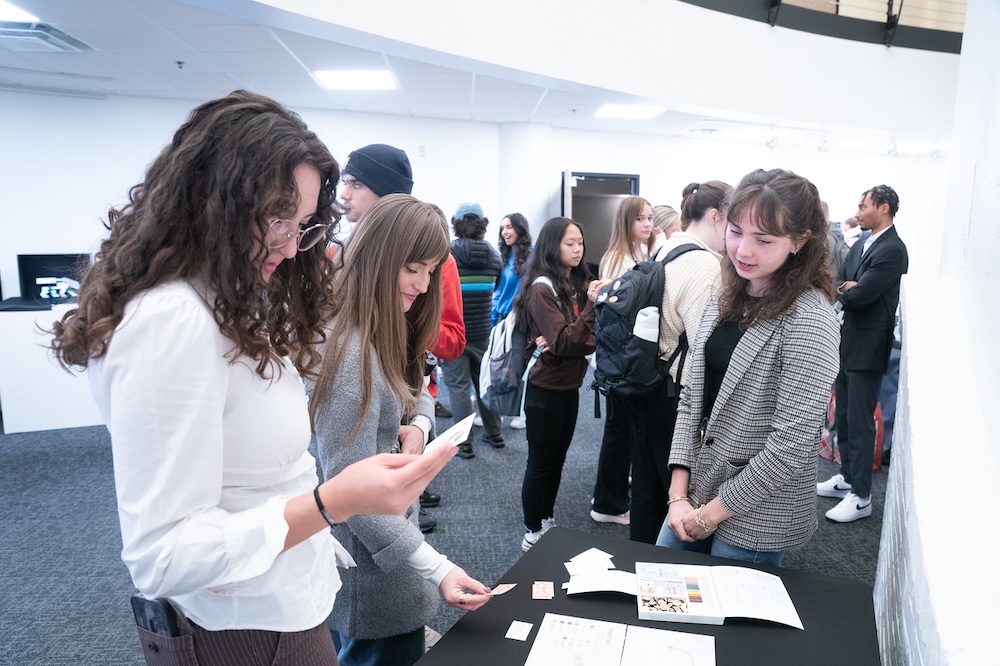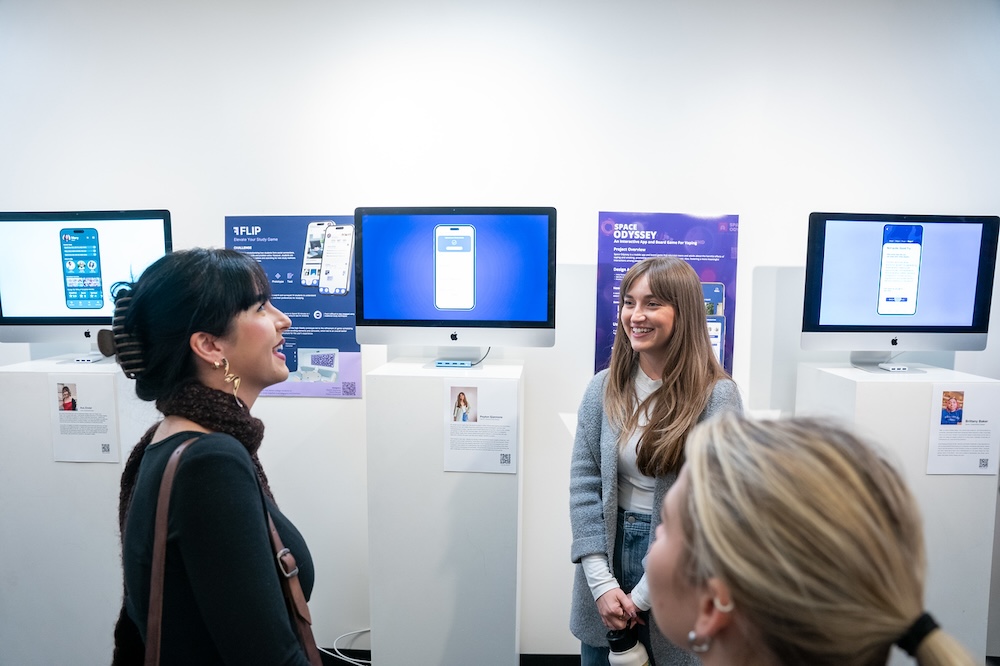Marrying Art, Design and Technology: Student Exhibition Shows Power of Immersive Storytelling
 Within the Leu Center for the Visual Arts, home of Belmont’s Watkins College of Art, a miniature projection mapping display previews an ambitious vision: a three-room immersive exhibition about endangered wildlife. The project represents exactly what Watkins' experiential design program is all about — using technology and design to tell compelling stories of impact.
Within the Leu Center for the Visual Arts, home of Belmont’s Watkins College of Art, a miniature projection mapping display previews an ambitious vision: a three-room immersive exhibition about endangered wildlife. The project represents exactly what Watkins' experiential design program is all about — using technology and design to tell compelling stories of impact.
"This degree marries art, design and technology," explained Watkins Dean James Pierce during the experiential design student exhibition's opening remarks. "We ask our students to explore technologies that sometimes they haven't worked with before. And when you're working with cutting-edge technology, you're not going to have all the answers."
Senior Madison Novak transformed that technological exploration into an exhibition combining projection mapping, web design and interactive elements to illuminate the critical role animals play in our ecosystem.
"Over the last 50 years, 69% of the world's wildlife population has decreased," Novak emphasized, detailing how she used technology to make this stark reality resonate personally.
Her vision includes three interconnected spaces: one for storytelling and introduction to endangered species, a second for data visualization revealing the scope of the crisis, and a final space featuring an immersive projection experience synchronized with heartbeat audio, designed to viscerally convey the urgency of wildlife conservation.
Beyond Traditional Design Education
What sets experiential design apart from traditional art and design programs? From Novak’s perspective, it's the program's forward-looking approach and constant evolution. "Even the things that I'm doing in my classes, the seniors two years ago weren't doing," she noted. "This program is super driven and cemented in the future."
Students master a new software package in virtually every class, but technical skill is just the beginning. The program emphasizes research methodology, user experience and accessibility. Projects often involve real clients — last semester, students worked with a Maryland-based clinic, developing solutions for actual business challenges.
"We learn a little bit of everything," Novak added. "Though that could be scary for some people, I find it really exciting because I don't want to do one thing for the rest of my life. And this field is ever changing and ever evolving."
Student Work
Preparing for Tomorrow's Careers
The program's comprehensive approach pays off. Novak, who will graduate in December, stands ready for a rapidly evolving job market. "Now I can market myself as a generalist. I can do user experience; I can do programming... I have a wide net to cast when I graduate."
Crucially, students learn to balance functionality with form. Projects demand visual impact and universal accessibility.
"You're learning color contrast and web accessibility. People with color blindness, for example, need super high contrast when they’re looking at something on a screen," Novak explained. "It's not just aesthetics, but it's functionality as well."
Human Connection at the Core
Despite all the technical innovation, the program maintains a strong focus on human connection. Pierce emphasized, "If you don't have that human component, it's not really worth doing. It's that human connection that is so important to what we do as designers."
This human-centered approach is evident in the range of projects featured in the exhibition. From Novak's wildlife conservation experience proposal to other students' work on medical devices, parenting apps and Biblical parables, each project forges meaningful connections with its audience.
The exhibition stands as a testament to what experiential design truly means — beyond digital interfaces and physical spaces, it’s about crafting experiences that engage, educate and inspire. As Novak's project demonstrates, it means using every tool available — from projection mapping to sound design – to make complex issues tangible and moving.
For future students, experiential design offers an opportunity to become fluent in the languages of both art and technology, while learning to touch the human heart.
In a world increasingly mediated by screens and digital experiences, these skills become not just valuable, but vital.
Learn More
Explore Belmont's Experiential Design Program





